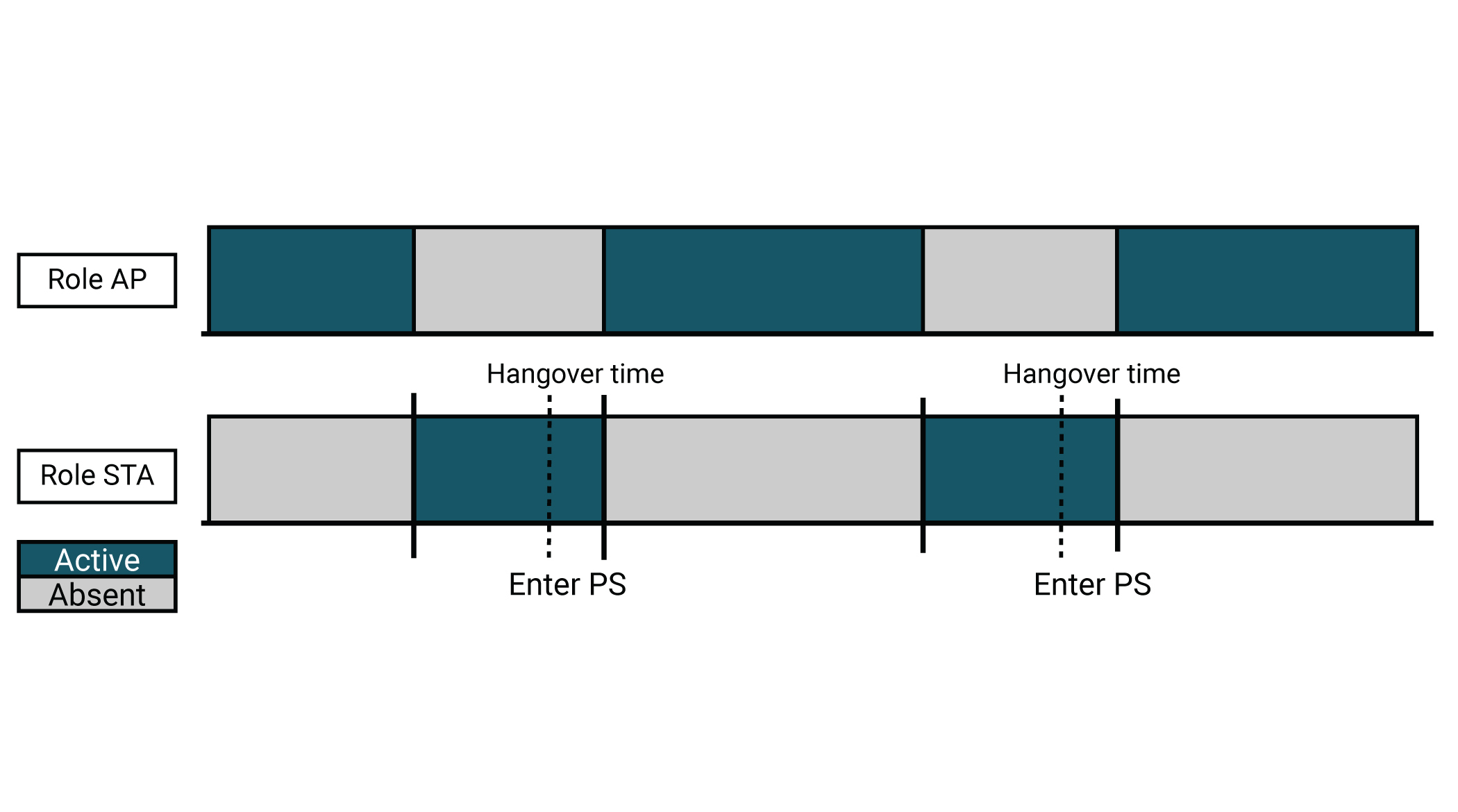SWRA733 March 2022 WL1807MOD , WL1837MOD
3.2.2 STA Based Roles
- Entering power save indicates to the remote AP to start buffering packets destined to role STA. Because of this, a STA can be absent from the channel for a period of time, knowing that it is not missing any packets that it is supposed to receive, and once it returns the AP will send all buffered packets.
- Role STA remains active (based on hangover learning algorithm) to handle the case where AP continue to send packets to avoid possible rate drops or disconnection. As shown in Figure 3-2 below:
 Figure 3-2 Role Switch Protection - Role
STA
Figure 3-2 Role Switch Protection - Role
STA